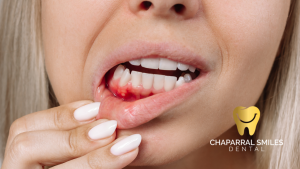Over in the land of little teeth, there are common pediatric dental issues that may cause a bit of grief. But worry not, for there are treatments galore to help your child’s smile shine once more. From cavities to crooked grins, this blog post will take you on a journey to learn what trouble begins. So sit back, relax, and let’s explore the world of children’s oral health, as well as so much more!
Key Takeaways:
- Cavities: Bacteria in the mouth erode the tooth enamel, resulting in cavities, a common pediatric dental condition.
- Preventive Measures: Regular dental check-ups, proper brushing and flossing techniques, and a balanced diet can help prevent common pediatric dental issues.
- Treatment Options: Treatments for pediatric dental issues may include dental fillings, sealants, fluoride treatments, and, in severe cases, dental crowns or extractions.
Common Pediatric Dental Issues
Before we explore the various pediatric dental issues that can affect your child, it’s necessary to understand the importance of maintaining excellent oral hygiene habits from a young age. Regular dental check-ups and a proper oral care routine can help prevent these common issues and keep your child’s smile healthy and bright.
Tooth Decay and Cavities
Common pediatric dental issues like tooth decay and cavities can be a significant concern for parents. Tooth decay occurs when plaque, a sticky film of bacteria, builds up on teeth and produces acids that eat away at the enamel. It can cause cavities, small holes in teeth.
Gum Disease and Gingivitis
Cavities are not the only oral health issue that can affect your child. Gum disease and gingivitis, which are inflammations of the gums, are also common pediatric dental problems. If left untreated, these conditions can lead to more severe issues, such as periodontitis, which affects the tissues that support the teeth.
Poor oral hygiene habits, such as inadequate brushing and flossing, often cause pediatric gum disease and gingivitis. To prevent these issues from developing, it’s necessary to teach your child the importance of proper oral care.
Tooth Sensitivity
Tooth sensitivity, which is common in children, can cause discomfort when consuming hot or cold foods and drinks. Factors such as tooth decay, gum recession, or enamel erosion expose the underlying dentin of the tooth, causing this sensitivity. It’s necessary to address tooth sensitivity early to prevent further complications and discomfort for your child.
Decay and cavities can contribute to tooth sensitivity in children. Ensuring your child maintains excellent oral hygiene practices and receives regular dental check-ups can help identify and address any sensitivity issues early on.
Cracked or Broken Teeth
Teeth are strong, but they can still be susceptible to cracks or breaks, especially in active children who may engage in rough play or sports. Cracked or broken teeth can lead to pain, difficulty eating, and an increased risk of infection. If your child experiences a cracked or broken tooth, it’s necessary to seek dental care promptly to prevent further damage.
Children’s sensitivity to hot or cold temperatures and pain when chewing can be signs of cracked or broken teeth. It’s crucial to address these issues promptly to avoid complications and ensure your child’s oral health and comfort.
Causes of Pediatric Dental Issues
Poor Oral Hygiene Habits
Poor oral hygiene habits can contribute to some pediatric dental issues. To prevent cavities and other dental problems, it’s vital to teach your child the importance of regular brushing and flossing. Encouraging them to develop good oral hygiene practices early on can set them up for a lifetime of healthy smiles.
Diet and Nutrition
The foods and drinks your child consumes play a significant role in their dental health. The sugars and acids in many popular snacks and beverages can contribute to tooth decay and cavities. Limiting sugary treats and opting for nutritious options like fresh fruits, vegetables, and dairy products can help support your child’s oral health.
The frequency of consumption of sugary foods and drinks can also impact dental health. Constant snacking or sipping sugary beverages throughout the day exposes the teeth to sugar and acids more frequently, increasing the risk of decay.
Inadequate Fluoride Exposure
Causes of inadequate fluoride exposure can include a lack of fluoridated water, using non-fluoridated toothpaste, or not receiving fluoride treatments from the dentist. Fluoride is crucial for strengthening the enamel and preventing tooth decay. Ensuring your child receives an adequate amount of fluoride can help protect their teeth from cavities.
Living in areas without fluoridated water can also lead to inadequate fluoride exposure. In such cases, your child’s dentist may recommend fluoride supplements or treatments to compensate for the lack of fluoride in the water.
Genetics and Developmental Factors
- Family history of dental issues
- Certain developmental conditions
Factors like genetics and developmental conditions can also influence your child’s dental health. Genetics may predispose your child to certain oral health issues, while developmental factors can affect the growth and alignment of their teeth. It’s important to be aware of these factors and work closely with your child’s dentist to address any potential concerns. Identifying issues early improves their management.
Signs and Symptoms of Pediatric Dental Issues
Unlike adults, children may not always be able to articulate when they are experiencing dental issues. It is crucial for parents to be aware of the signs and symptoms that may indicate a problem with their child’s oral health. Here are some common signs to watch out for:
Visible Signs of Tooth Decay
In children, the surface of the teeth can show signs of tooth decay. You may notice white spots, brown or black areas on the teeth, or visible holes or pits. If you observe any of these signs, it is crucial to schedule a dental appointment for your child.
Pain or Discomfort
Tooth pain, or discomfort, is a common symptom of dental issues in children. Your child may complain of toothaches, sensitivity to hot or cold foods, or pain while chewing. If your child is experiencing persistent pain or discomfort in their mouth, it is vital to consult a pediatric dentist for evaluation and treatment.
Pediatric dental issues can cause significant discomfort and affect your child’s daily activities such as eating, speaking, and sleeping. It is important to address any pain or discomfort promptly to prevent the condition from worsening.
Swelling or Inflammation
Swelling of the gums, cheeks, or face, as well as redness or inflammation in the mouth, can indicate an underlying dental issue in children. If you notice any swelling or inflammation, especially if accompanied by pain or fever, seek dental care for your child immediately.
Inflammation in the mouth can be a sign of infection or gum disease, which requires prompt treatment to prevent further complications. It is crucial to address any swelling or inflammation in your child’s mouth to maintain their oral health.
Changes in Eating or Speaking Habits
Visible changes in your child’s eating or speaking habits can also indicate potential dental issues. If your child is avoiding certain foods, chewing only on one side of their mouth, or experiencing difficulty speaking clearly, it may be a sign of an oral health problem. Pay attention to any changes in your child’s habits and consult a pediatric dentist for an evaluation.
Issues with eating or speaking can impact your child’s overall well-being and quality of life. Addressing any changes in their habits promptly can help identify and treat any underlying dental issues effectively.
Diagnostic Tools and Techniques
Visual Examinations
The first step in diagnosing pediatric dental issues is a visual examination. The dentist will look for signs of decay, misalignment, or other concerns that may require treatment. Regular check-ups are crucial to detect and address any issues early
X-Rays and Imaging
X-rays or other imaging techniques may be necessary for any suspected issues that are not visible during a visual examination. These tools provide a more in-depth look at the teeth, bones, and soft tissues in the mouth. X-rays can help detect cavities between teeth, impacted teeth, and other hidden problems.
To ensure the safety of your child, dentists use low-dose radiation when taking X-rays. This tiny amount of radiation is considered safe and necessary for identifying dental issues that may not be visible to the naked eye.
Dental Probes and Explorers
Dentists use dental probes and explorers to detect potential issues, as visual examinations can only reveal so much. These tools allow the dentist to check for cavities, plaque buildup, and the overall health of the gums. By gently probing the teeth and gums, the dentist can determine the extent of any problems.
Another benefit of using dental probes and explorers is that they can help identify areas that may be at risk for future issues. Early detection and treatment of these concerns can prevent more serious problems.
Oral Health Screenings
With oral health screenings, dentists can assess your child’s overall dental health and identify any potential concerns. These screenings may include evaluating the jaw alignment, checking for signs of oral cancer, and assessing the development of the teeth and mouth. By conducting regular screenings, dentists can ensure early detection of any issues.
Treatment Options for Pediatric Dental Issues
Fillings and Restorations
Keep your child’s smile bright and healthy with fillings and restorations. Fillings play a crucial role in pediatric dental care by repairing cavities and restoring damaged teeth. Your dentist will remove the decayed part of the tooth and fill the space with a durable material to prevent further decay and restore the tooth’s function and appearance.
Crowns and Caps
You can save and strengthen your child’s damaged tooth with crowns and caps. We place these custom-fitted covers over a tooth that has experienced extensive decay or damage. They provide protection and support, helping to avoid tooth loss and maintain proper alignment in the mouth.
Fillings, although effective for smaller cavities, may not provide enough support for severely damaged teeth. In such cases, crowns and caps offer a more extensive solution to protect the tooth and ensure its longevity.
Root Canals and Pulpotomies
Canals
The thought of a root canal may sound daunting, but it can help save your child’s tooth from extraction. Root canals and pulpotomies are procedures used to treat infected or damaged tooth pulp, which is the inner part of the tooth that contains nerves and blood vessels. By removing the infected pulp, cleaning the area, and sealing it off, your dentist can prevent the spread of infection and preserve the tooth.
Extractions and Space Maintenance
The
Dental
Space
Preventive Measures and Home Care
Once again, preventive measures at home play a crucial role in maintaining your child’s oral health. By establishing good habits early on, you can help prevent common pediatric dental issues and ensure your child’s smile stays healthy and bright.
Brushing and Flossing Techniques
Care when it comes to brushing and flossing your child’s teeth. Use a soft-bristled toothbrush and teach your child to brush gently in circular motions to remove plaque and debris. Don’t forget to floss between their teeth to clean hard-to-reach areas that a toothbrush may miss.
Fluoride Toothpaste and Mouthwash
Any child older than three can benefit from using fluoride toothpaste and mouthwash to strengthen their enamel and prevent cavities. Adult supervision is necessary when using these products in moderation to prevent tooth decay.
For instance, make sure your child spits out the excess toothpaste and mouthwash after brushing to avoid ingestion of fluoride, which can be harmful in large amounts.
Healthy Diet and Snacking Habits
The foods your child eats can have a significant impact on their dental health. The sugars and acids in snacks and drinks can contribute to tooth decay. Encourage a healthy diet rich in fruits, vegetables, and whole grains while limiting sugary treats.
The timing of meals and snacks also matters. Frequent snacking throughout the day can expose teeth to acid attacks that lead to decay. Offer water between meals to help rinse away food particles and neutralize acids.
Regular Dental Check-Ups and Cleanings
To maintain optimal oral health, it’s vital to schedule regular dental check-ups and cleanings for your child. These visits allow the dentist to monitor your child’s oral development, identify any issues early on, and provide professional cleanings to remove plaque and tartar buildup.
To prevent cavities, your dentist may recommend dental sealants or fluoride treatments to protect your child’s teeth. These additional measures can provide an extra layer of defence against decay and maintain their oral health.
To wrap up,
Drawing together all the information about common pediatric dental issues and treatments, remember that prevention is key to maintaining your child’s oral health. By establishing excellent oral hygiene habits early on, such as regular brushing, flossing, and visits to the dentist, you can help prevent many of the issues discussed in this article.
It’s important to be aware of the signs of common dental issues like cavities, gum disease, and malocclusion so you can address them promptly and prevent any further complications. By staying informed and taking proactive steps to care for your child’s oral health, you can help them maintain a healthy and joyful smile for years to come.





